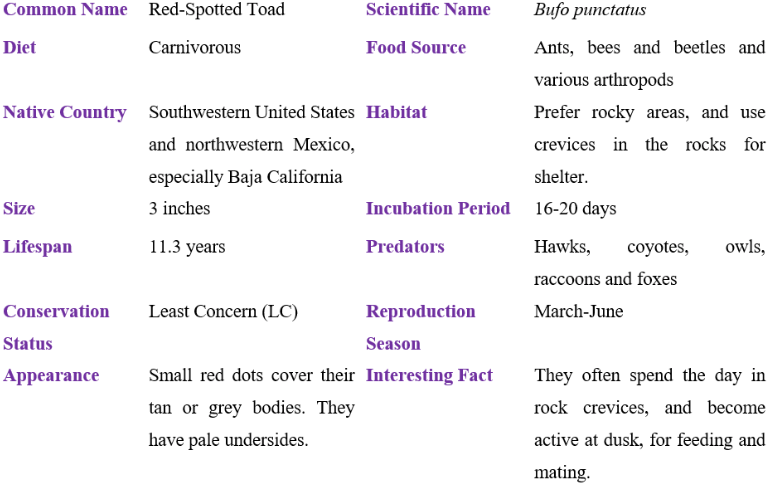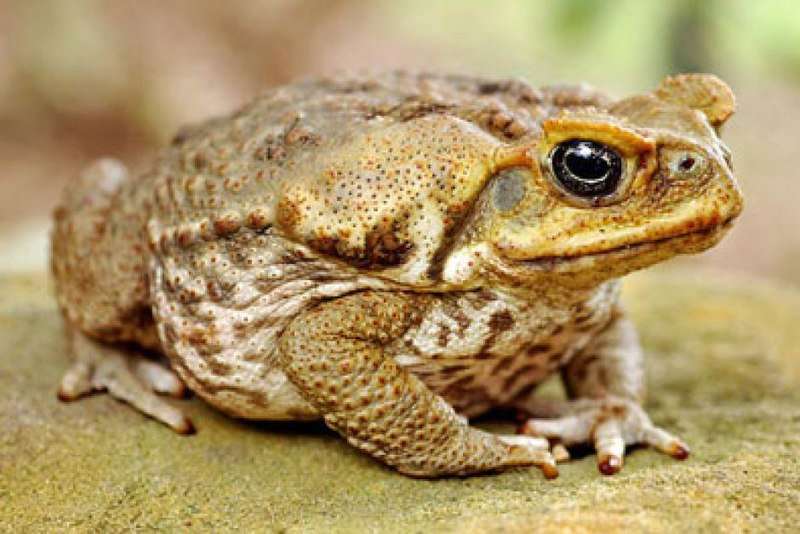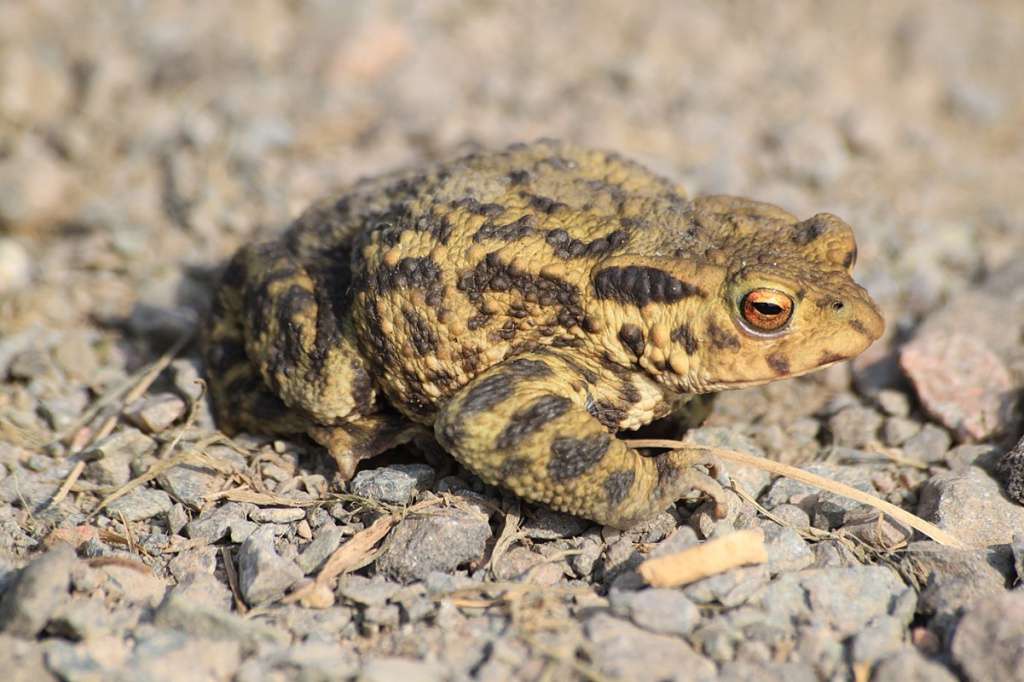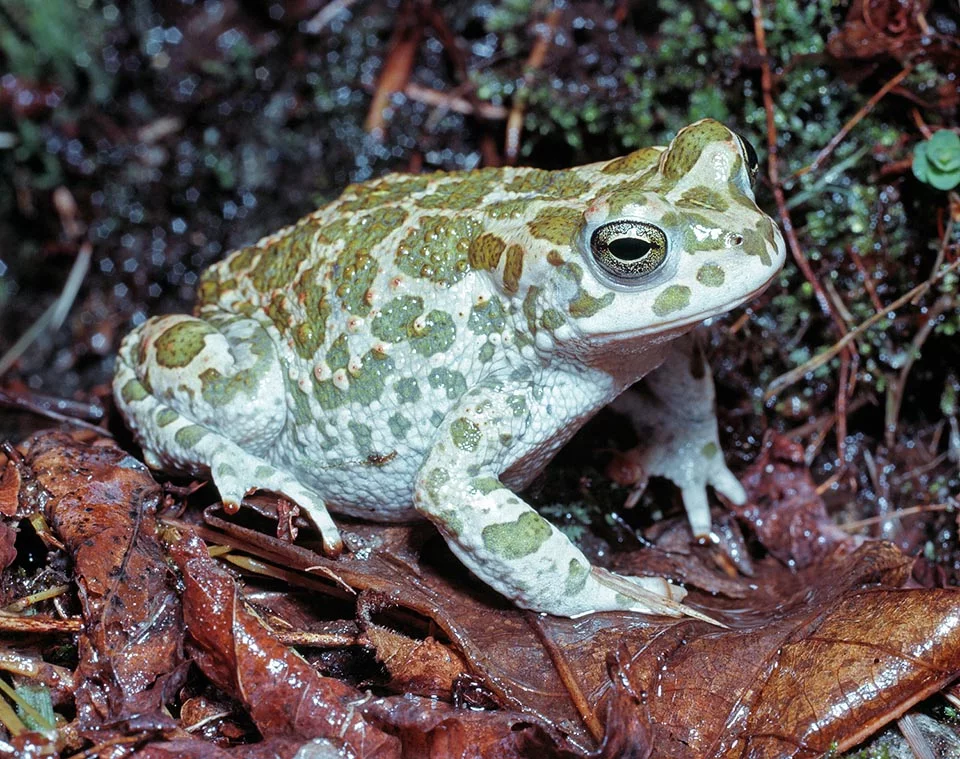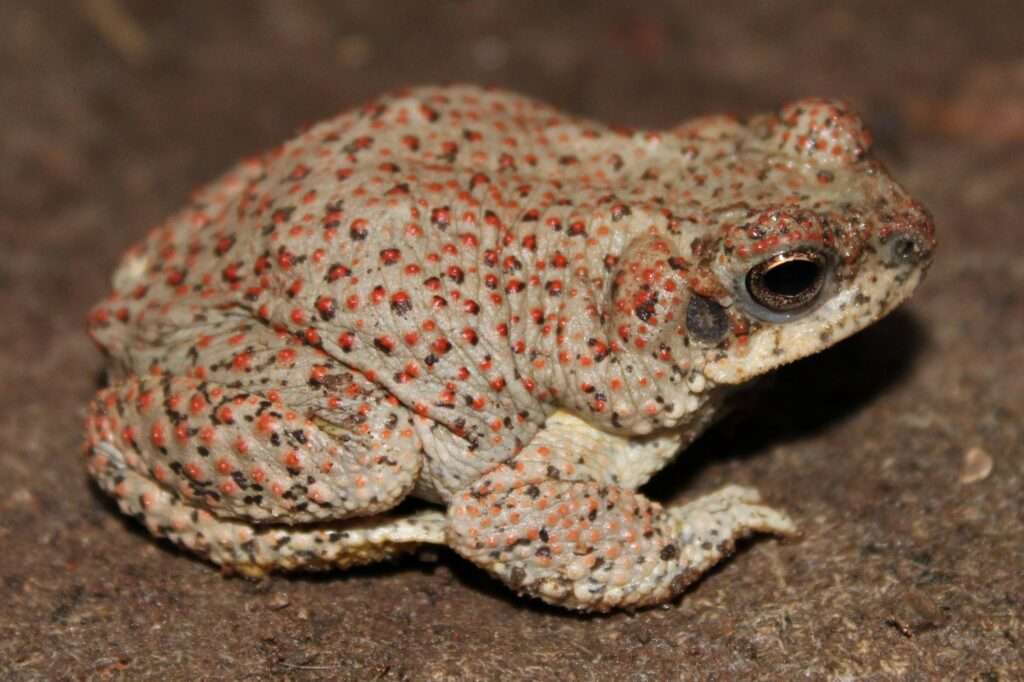
The red-spotted toad, Bufo punctatus, is simple to recognize. Adults have brownish backs covered in red markings. These tiny toads are widespread in the American Southwest and northern Mexico, where they feed primarily on insects. They are opportunistic eaters and will eat any bug that comes into their path, but some insects are staples.
Appearance
It is a species of tiny toad that can reach lengths of 3.7 to 7.5 cm (1.5 to 3.0 in). The animal’s head and body are flattened, and its dorsum is light gray, olive, or reddish brown with reddish or orange skin glands. It features circular parotoid glands and a ventrally that is pale or buff, with or without very light dark spots. It has a pointy nose. The undersides of its foot are yellow, and the ventral spotting on the juvenile toad’s body is more pronounced than on the adult’s. During breeding season, the male red-spotted toad develops nuptial pads and has a dark neck.
Habitat
Found in the southwest of the United States and Mexico northwest, particularly Baja California is this toad. It generally grows in stony riverbeds and streams, frequently in arid or semi-arid areas. On the coastal slope, it is extremely confined, while it is common in the deserts.
Diet
The main food sources for the red-spotted toad are ants, beetles, and other arthropods. Spiders and other insects with segmented bodies are considered arthropods. These toads reproduce in streams, stock ponds, and puddles but prefer to live in dry, rocky environments. Any insect in the area is a possible prey item. Insects like ants, bees, and beetles are the main food sources for adult red-spotted toads, which are carnivores. Sometimes, they consume smaller amphibians.
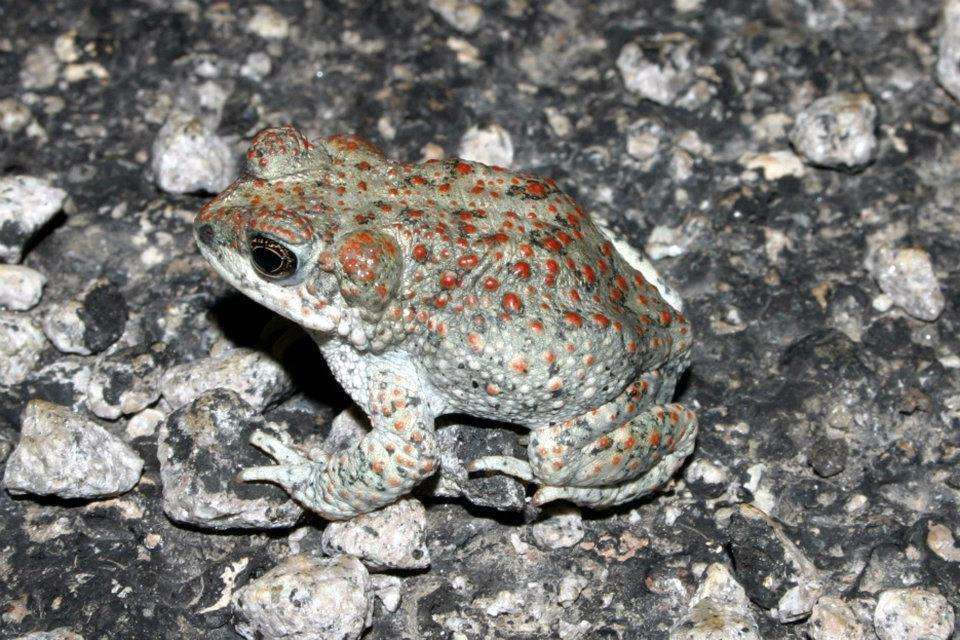
Breeding and Behavior
It requires seasonal lakes or even brief rain puddles in dry places to use for breeding. Taking advantage of the transient water bodies, eggs hatch in three days and tadpoles can undergo transformation in six to eight weeks. It hides away during the dry seasons in crevices, beneath damp vegetation, or in burrows. During rainy seasons, when swarms of people emerge, it becomes abruptly active.
They frequently spend the day hiding out in rock crevices before waking up to feed and mate at dusk. March to June is when birds breed. Males will wrestle to demonstrate their dominance during this time. Females produce unique eggs (rather than laying eggs in clumps like most amphibians in the Grand Canyon). Tadpoles change into adults about 6 to 8 weeks after hatching. Red-spotted toads have evolved to thrive in arid conditions. They can endure a 40% body water loss.
Table
